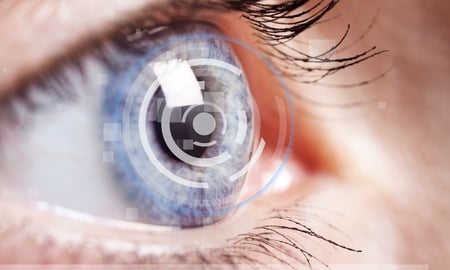
Multifocal and toric lenses are commonly used artificial lenses that can help patients with cataracts who have both nearsightedness and farsightedness or astigmatism.
What are cataracts?
Cataracts are a common eye problem that can cause blurry or double vision, challenges with differentiating colors, or make it difficult to see at night. Typically, light passes through a clear lens where it is focused, allowing the retina to receive a clear image. A cataract causes proteins to build up on the lens, making it cloudy, leading to a blurry image.
Many times cataracts develop due to aging; however, other risk factors include diabetes, smoking, and prolonged exposure to UV rays. As cataracts develop, they usually start small with the cloudiness only affecting a portion of the lens and growing slowly. While cataracts can affect one or both eyes, they can’t spread from one eye to the other.
How are cataracts treated?
During the early stages, symptoms may be managed using glasses, anti-glare sunglasses, magnifying glasses, or brighter lights. As a cataract worsens and begins to interfere with daily activities surgery, the only effective treatment for cataracts, may be required. Cataract surgery is typically an outpatient procedure not requiring a hospitalization that replaces a cloudy lens with an artificial intraocular lens (IOL).
Similar to glasses, there are several types of artificial lenses with varying levels of focusing strengths that may be used for cataract surgery, including monofocal lenses, multifocal lenses, and tonic lenses. Your doctor will discuss the different options to determine the best lens for you.
- Monofocal lenses have one focusing distance and are either set to a close, medium, or far range. Depending on the correction needed, reading glasses may still be required.
- Multifocal lenses have different focusing strengths that allows for near, medium, and far distances, reducing the need for glasses.
- Toric lenses are monofocal lenses that are designed for people who have an astigmatism, an uneven curve to the cornea or lens.
Recovery after cataract surgery
After surgery, most patients will go home the same day but may need to wear an eyepatch for a few days. Your doctor may also prescribe eyedrops for a couple of weeks in order to aid in the healing process.
Itching, mild discomfort, some fluid discharge, and blurry vision are all normal after surgery. Your vision will continue to improve over the first few days and complete healing may take up to eight weeks. During this time, your doctor will schedule regular check-ups to monitor your progress.